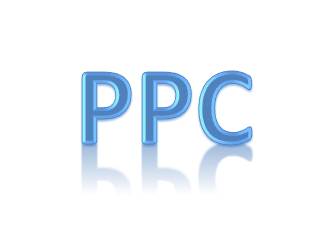Entries from May 2012 ↓
May 18th, 2012 — Customer service, social media, social media marketing, social media training, social networking
We all know it’s cheaper to retain customers than to get new ones, so why are so many companies still so hell bent of grabbing more new customers?
Maintaining relationships can be time consuming, but the returns can be impressive. Social media has opened up a whole new way of engaging with and adding value to customer relations, so isn’t it about time you harnessed that power to boost your income from your existing customers?
If you’re not sure how to go about this, take a look at this following aticle on SocialMediaExaminer.com. They give you 5 tips to help you gain more revenue from your existing customers using social media…
Are you using social media to keep your existing customers happy?
Do you want to figure out how to drive revenue from existing customers through the social channel?
This post will give you 5 tips to gain more revenue from your existing customers using social media.
Why Focus on Existing Customers?
For many companies, connecting with their existing customers is a natural fit for social media. These companies are seeing conversations about their brands, their competitors and their industry that provide them with an opportunity to engage others in dialogue.
There are two types of strategies that revolve around existing customers on the social media channel. The first is to offer customer service help through the social channel. …
May 16th, 2012 — article marketing, article writing, marketing
Here’s a post from the archives. Although written a few years ago, it’s still very relevant today.
We all understand the importance of article marketing to help generate traffic, building reputations and brand awareness, but are you making the most of your content? What follows is a post outlining 7 ways article marketing can improve your profits:
Writing articles and marketing with articles is one of the best and fastest ways to market your business.
Don’t believe me? OK then, I’ll prove it. Here are seven ways you can benefit from articles.
1) Articles quickly position you as an expert in your field
Writing articles sets you apart from your competition. You never have to say “Listen to me, I’m an expert!” Your articles do that for you, because articles increase your “expert-ability.”
2) Articles can become an army of 24/7 salespeople
Once you have an article published, especially on the internet, you will achieve a 24 hour, 7 day a week, 365 day a year international sales team working specifically for you and your business.
3) One article can have many uses
In other words, leverage. Just one article can be used as a free report, a newsletter feature, it can become part of an online e-course, part of a book, etc.
4) Articles spread the word about your business and your services
Articles, especially when submitted online have a very long shelf life. They can be picked up by anyone at anytime and anywhere.
5) Marketing articles is simple, easy and inexpensive
It costs you nothing to write an article (apart from your time). It also costs you nothing to have it listed on article directories such as EzineArticles.com. Imagine what it would cost you to pay for that kind of exposure and publicity.
6) Articles can help you build a mailing list
Once you have a few articles out there, prospects will begin to flow in. These will build into a mailing list worth its weight in gold which can be used over and over again.
7) Articles let you stay in touch with clients and sell more products
We know that it can take from 5 to 8 contacts or more for new prospect to be ready to become a client. Articles allow you to stay in touch with prospects and provide them with quality information.
This list of 7 is just the tip of the ice berg. Article writing and article marketing will boost your business. Why not give it a go?
May 14th, 2012 — Google, Google algorithms
Neil Stoneham of Voxtree has kindly agreed to allow me to re-post his blog Hot Content and the King-Fu Panda – Part Two on Freelance Copywriter’s Blog.
In the last post, we saw how Google employed a bit of kung-fu Panda to send badly written content right to the bottom of the pile…where it belongs. We also looked at why web content is changing and the importance of having good, strong copy that is read and shared.

Now, I’d like to share some ideas that help draw visits to your site and attract potential ‘backlinks’ (links to your site from other users).
Apparently, few people these days buy a product or service directly as a result of a Google search. Think about it – when did you last do that?
If someone comes across your website directly from a keyword search, you might well grab their interest – especially if you’ve made a good job of your site – but they are unlikely to buy your product or service straight off the bat.
Typically, people will look for other things like recommendations from sites that rate you – or criticisms from those that don’t – so it’s important to get a name for yourself and have others singing your praises. Here are a few ways to create added value content that does just that…
Add something useful
A good proportion of search engine activity comes from people seeking answers to queries. If you offer a service, why not produce a series of articles that answer some of the your most frequently asked questions?
I recently wrote an article for an experienced quantity surveyor who specialises as an expert witness. Based on his notes, I wrote about how to avoid stress while managing a building project. For anyone embarking on such a project, there is some pretty solid advice in there and so the article achieves three things:
1) It draws traffic to the site from people who are not looking specifically for the service but may have need of it in the near future.
2) It builds up his reputation as an authority on the subject, thus enhancing the essential ‘trust’ factor.
3) Others in the trade will want to link to the article. This increases his backlinks, his audience reach and his search ranking.
Create something unusual
Marketeers these days have to be pretty creative and original if they want their brand to stand out. And so we get all sorts of weird and whacky things in an attempt to generate that all-important message.
Viral videos are all the rage now, so you could go down that route if you’re adventurous. Alternatively, try for some content with a humorous take on your product or service – lesser known uses for your product might be a good start.
People share things that are funny. But a word of warning: comedy writers often talk about how difficult humour is to get right. That’s why there are numerous casualties from the viral craze – companies that have lost out because they ended up offending too many people and completely sending out the wrong message!
Make it personal
Address your customer directly in a way that shows how your product or service can enhance their lives. If you engage your customer in an emotional way, you can increase the likeability – and therefore salability – of your product. Tell stories about your product with a happy ending. Show how it can help your customer become more attractive, safer, proud. You could even target different parts of your demographic by addressing their individual cravings in separate articles.
Advertise your content
Whatever the form of your content – be it video, article or blog – you’ll need to get the word out there. Social media is the easiest, cheapest and most fun way of advertising what you’ve created. Tweet about it on Twitter, link to it on Facebook, blab about it on your blog; there are so many different ways to grab the attention of your audience.
Remember that if it’s good and relevant to someone other than yourself, chances are it will get shared.
But people won’t share badly written content, unless their purpose is to laugh at you. Good quality content stands more chance of being passed on, so make sure it passes the test and you’re away!
May 11th, 2012 — copywriting tips, Pay Per Click advertising
Before we get started, let’s go back to basics.
PPC (Pay-Per-Click) Google ads are found above and to the right of your search results. Written with your keywords and key phrases in mind, they are highly targeted and are only seen by people searching for your product or service. As the name suggests, you only pay when someone clicks your ad, so they can be quite cost effective (if you know what you’re doing).
So how can you make sure your ads are effective?
Well, here are 7 tips to help you create powerful PPC ads.
1. Know your audience
As with all your marketing, your advert will be targeted at a specific audience. It is important that you make sure your message is written specifically for them. Writing something for everyone will result in a wishy-washy ad that doesn’t attract anyone.
2. Include your keywords
The whole point of PPC is that it’s targeted, so make sure your keywords are included in the heading and body of your ad. Not only will this highlight your ad’s relevance, it will also reassure the potential customer that you are offering what they are looking for.
3. Keyword only headings are a no-no
It may be tempting just to cram all your keywords into your heading, but it will create something ugly and meaningless. Your heading should be benefits driven, offer a hook and contain your keyword. That’s quite a tall order considering you only have 25 characters to play with, so you’ll have to get creative.
4. Be focused
Each ad you write should be focused on one benefit only. You only have 25 characters for your heading and 35 characters for your description, so there’s no room for waffle.
5. Call to action
The best ads will have a call to action. It could be your phone number or a link. Either way it will add value to your ad and give you a way to measure its effectiveness.
6. Proofread
So important and yet frequently forgotten about – proofreading will prevent you from looking like a total amateur and publishing an ad with a blaring typo in it.
7. Test
The only way to make sure your ads are working as hard as possible for you is to test them. Try different headings, calls to action and benefits to see which brings in the highest response rate. Only through this continual process can you find the perfect formula.
Over to you
Do you use PPC advertising?
If so, leave a comment below and leave your top tips for getting the most out of your ad.
May 9th, 2012 — networking, social media, social networking
Let me ask you something. Do you enjoy networking?
By networking I mean the face to face variety.
It tends to be a marmite thing – you either love it or hate it. Me – I hate it.
When someone mentions networking to me, I immediately envisage a room full of people desperate to sell, but no one wanting to buy.
But networking doesn’t only happen that way.
Networking – the social side
Social media has opened a whole new way to network.
In my experience (and yes, there are exceptions and we’ll take about those later), most people who use social networking sites are there to chat, exchange ideas, offer advice and to generally have fun.
Did you see that? I used networking and fun in the same sentence.
It’s almost as though, because you’re not all cooped up in a room, people relax and chat more. They don’t feel as though they must leave with at least one sales lead (which, incidentally, is never the best mind-set for networking).
Of course, there are still those who believe that networking is equivalent to spamming. On social networking you see it through constant promotional posts and tweets; in real life is it the guy who immediately hands you a brochure before even saying hello.
One of the main benefits of social networking is that you can do it from your desk. If you’re snowed under it’s often difficult to make time to get out to an organised event. But if you dabble on the social side, you can easily fit in a few posts and tweets whilst sat at your desk.
After you…
There is another type of networking – you probably don’t even think of it as networking – and that’s when you meet people in everyday life.
How many times have you struck up a conversation with someone in the school playground, in the bus queue or on the train, and ended up talking about work?
It’s one of those questions you naturally ask someone you meet someone for the first time.
This type of conversation often leads to finding out interesting information because it’s far more informal and the person you’re speaking with is less likely to launch into their well-rehearsed sales pitch when not in a traditional networking environment.
Striking up a conversation
So we’ve looked at social networking and ‘free-styling’, but what about those dreaded formal situations? How do you make the most of them?
I don’t know about you, but my biggest problem with networking events is breaking into groups already chatting, especially if you don’t know anyone there.
If you have any strategies about that I’d love to hear them.
Normally, I’ll take the route of finding someone who’s also on the fringes and try to chat to them. Rather than opening with ‘Hello, my name is Sally and I’m a copywriter’, I usually ask a question about them – normally not work related.
If it’s a lady and she happens to be wearing a striking necklace, I’ll comment on it and start a conversation that way. Basically, I’ll comment on anything other than work, that way I get to know them as a person rather than them as a business.
That’s just my way of coping – what do you do?
Leave a comment below and see what tips we can muster between us to make your networking more effective (and less scary).









